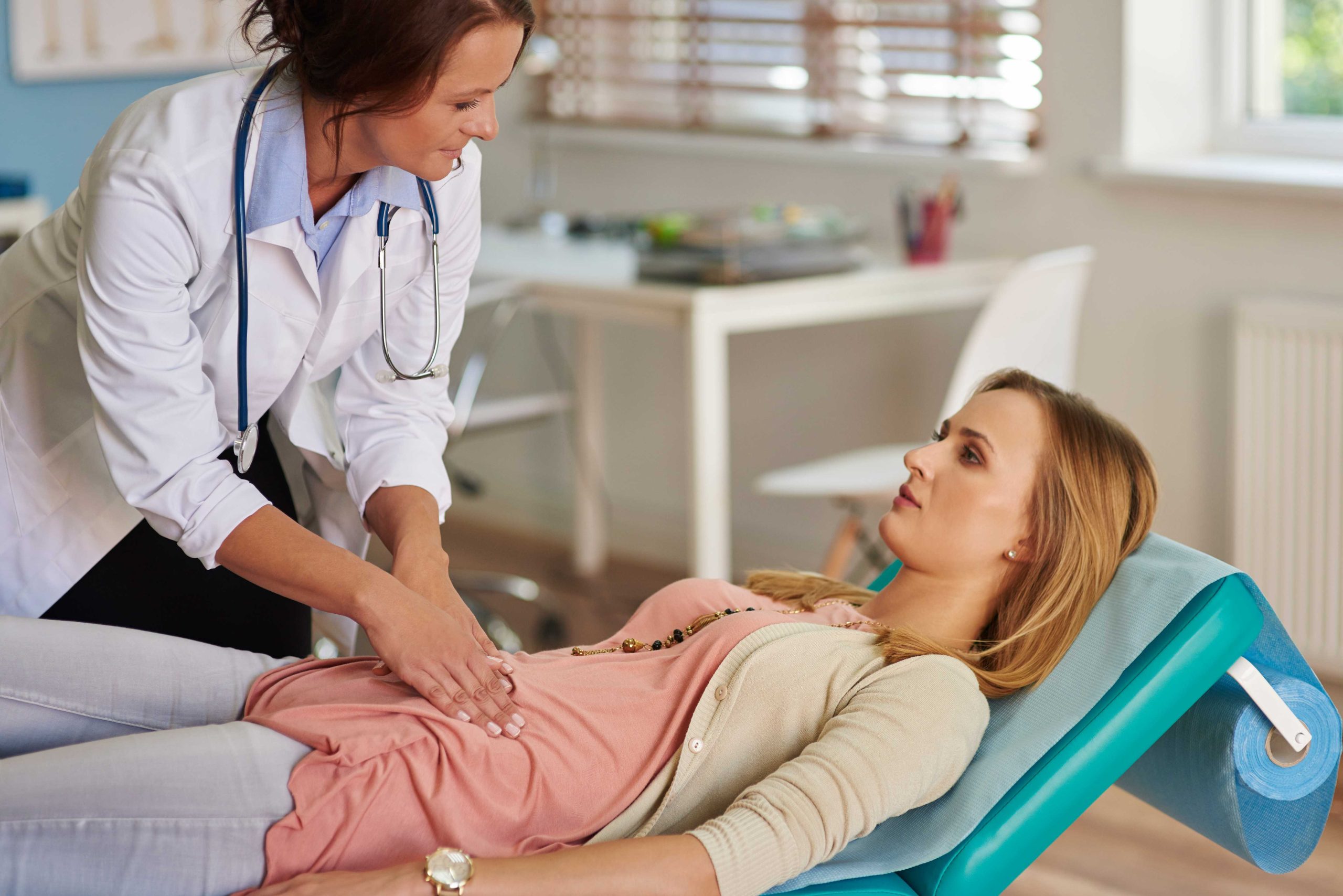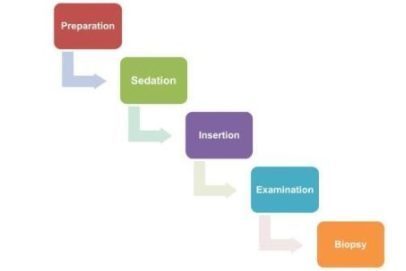How Gastroscopy is Your First Step to Finding Relief from Stomach Ulcers
Last update : 24 Oct 2025

Stomach ulcers hamper the daily lifestyle of a person. Gastroscopy is a potential treatment option to treat this disease while offering a sigh of relief to a patient.
A stomach ulcer refers to an open sore in the lining of your stomach. This is one of the most prevalent causes of stomach pain. A key problem in this disease is that you might not always witness symptoms. In Canada, the age-specific mortality rate of this disease was 1.4 in 2023.
What are the common symptoms? Burning abdominal pain, nausea, bloating, indigestion, etc, are the major symptoms of stomach ulcer. You need to consult a doctor if you experience any of them.
Gastroscopy is an ideal option to treat stomach ulcers. This is a common treatment method, which is suggested by doctors. You need to be aware of gastroscopy preparation if you witness such symptoms. This article analyses how gastroscopy helps in providing relief from stomach ulcers.
What is a Gastroscopy?
Gastroscopy (or upper endoscopy) refers to the process of examining the inner side of the oesophagus, stomach, and small intestine. Gastroenterologists mainly execute this procedure during the day. A patient does not need to stay in the hospital for this test.
A thin and flexible tube is inserted from the mouth, and it goes down to the stomach. A camera (called an endoscope) is attached to it that captures the inside of the stomach. The duration of this test is around 15 to 30 minutes. The tube is directed by your doctor, and your digestive system is displayed on the monitor.
Role of Gastroscopy in the Detection of Stomach Ulcers
What can a gastroscopy detect? Well, this test is done to detect stomach ulcers. This also helps to identify inflammation, stomach cancer, and celiac disease. Let’s check out the importance of gastroscopy in detecting stomach ulcers.
Direct Visualisation
Instead of assuming from the symptoms, gastroscopy can identify ulcers. Hence, its size and depth are detected. The exact location is also identified. This test procedure also helps in figuring out complications, like perforation, bleeding, etc.
Taking Biopsies
There are certain types of stomach cancers that are present in the form of ulcers. Gastroscopy can determine whether an ulcer is benign or malignant.
Detection of H. pylori
Helicobacter pylori causes ulcers in the stomach. The presence of this infection is determined by a private gastroscopy.
Treating Bleeding Ulcers
Stomach ulcers often bleed. This can result in further complications. Gastroscopy treats this problem by adopting specific techniques, like thermal coagulation or injection therapy.
Let’s see how gastroscopy differs from other diagnostic procedures.
| Tests | Use Case | Result | Risks |
| Gastroscopy | Diagnosing ulcers and investigating symptoms like unexpected weight loss, consistent heartburn, etc. | HD images of the stomach’s inner lining, and allowing tissue biopsies for microscopic examination | Reactions to sedatives and bleeding in rare cases |
| X-ray | First test to identify issues in the upper GI tract | Finding abnormalities in the outer lining of the stomach, oesophagus, and duodenum | Exposure to radiation |
| Blood test | Detecting infection or inflammation in the stomach | Indicating digestive issues | Mild pain or bruising at the injection site |
Table: Gastroscopy vs X-ray vs Blood test
X-ray and blood tests are useful in detecting various stomach-related problems. But gastroscopy is a perfect choice when it comes to diagnosing stomach ulcers. Hence, this must be the first step.
How is Gastroscopy Performed?
Gastroscopy is the initial consideration in treating stomach ulcers. Here are the major steps that are considered while performing this procedure.

Figure: Gastroscopy Step-by-step Process
Preparation
Gastroscopy preparation is not so complex. You need to be on an empty stomach for this test. A patient should not eat any solid food for 6-8 hours before the process.
If you take any medication related to diabetes, antiplatelets, or blood thinners, you may have to stop them before gastroscopy. Consult your doctor for better clarity.
Sedation
Gastroscopy is not a painful process. But patients feel uncomfortable when the endoscope is passed. There is also a chance of gagging or bloating. To combat it, a sedative is given to the patient. Your doctor can also consider a local anaesthesia.
Insertion
The process begins with the insertion of the camera-infused tube into the mouth. This goes down the oesophagus, followed by the stomach and the duodenum. The camera examines these body organs while producing quality images.
Examination
To determine an ulcer, the lining of the stomach is examined by the doctor. Any other abnormality is also determined.
Biopsy
After the completion of the procedure, small tissue samples are taken for further evaluation. This aids in detecting the presence of cancer in the stomach.
How is Gastroscopy Beneficial in the Early Detection of Stomach Ulcers?
Relying on a private gastroscopy is effective in detecting stomach ulcers. This helps you to be relieved from the symptoms that become unbearable after some time. Let’s check out the top benefits.
Quicker Relief via Targeted Treatment
Gastroscopy helps in visualising the ulcer and its adjacent tissues directly. Hence, its presence and features are confirmed within a short span. This accounts for offering the targeted therapy quickly so that a patient can obtain relief from it.
Detecting Complications
Certain ulcers are not painful, while others bleed silently. Unlike other diagnostic tools (X-ray and blood tests), gastroscopy can determine the early signs. Hence, you obtain the right treatment before they become serious problems.
Analysing Treatment Response
Have you already undergone any treatment for other kinds of ulcers? Well, considering gastroscopy for stomach ulcers can help determine whether other one has become better or worsened.
Lowering Recurrence Risks
Gastroscopy is effective in the early detection of stomach ulcers because it lowers recurrence risks. This is done by removing precancerous polyps. Here, ESD and EMR are prioritised.
What are the Main Treatment Considerations after Gastroscopy?
Gastroscopy is recommended for people who experience the symptoms of stomach ulcers. Well, a patient needs to go through a dedicated treatment process after performing this procedure.
- Medications: Medicines are not given for any post-procedure symptoms (stomach discomfort, sore throat, bloating, etc.) because they are usually manageable. If not managed, your doctor can offer probable medicines. Well, antibiotics are often given for combating H. pylori.
- Lifestyle change: Any strenuous activity must not be performed till the next day after a private gastroscopy. This is more relevant for the people who are given sedatives.
- Diet: Referring to diet, a patient is advised to take clear liquids on the day of the gastroscopy. Later, soft, and easily digestible foods are offered gradually. Any spicy food must be avoided. You need to stay hydrated after the test procedure.
You need to seek medical help if you witness consistent pain, trouble in swallowing, chest pain, vomiting blood, etc.
Who is Ineligible for Gastroscopy?
Gastroscopy is widely recommended by doctors for diagnosing stomach ulcers. However, this is not advisable for everyone. Here are some cases when this test procedure is not suggested.
- Severe breathing troubles: Are you suffering from any serious breathing issues? If yes, then gastroscopy is not recommended for you. This is because an existing breathing problem can be aggravated by the sedatives used in this process.
- Unstable key signs: Gastroscopy is not ideal for a person who is dealing with issues, like a fluctuating heart rate or blood pressure. Such signs make this treatment procedure riskier.
- Chronic heart or lung disease: Doctors do not suggest this diagnostic method to patients who are suffering from any severe heart or lung disease. The procedure itself and the sedation are risky in such cases.
- Patient in coma: People, being in a comatose state, cannot offer the necessary support that is needed from the patient’s side during gastroscopy. This makes the process inadvisable for them.
To Conclude
Gastroscopy is considered for diagnosing stomach ulcers due to its high reliability. If detected early, a patient can get quicker relief. This also accounts for faster healing. A person must not eat solid foods for at least 6-8 hours before the test. Gastroscopy is not recommended for people who suffer from serious breathing issues.
Book a Gastroscopy Appointment
Are you experiencing bloating, indigestion, or any abdominal pain? These are the signs of stomach ulcers. You must not ignore them. We specialise in gastroscopy and our experienced medical team is committed to offering screening services with utmost comfort. Choose us to obtain a high standard of care.
Frequently Asked Questions
1. Will I Be Fully Unconscious During the Gastroscopy Procedure?
No, you will not remain completely unconscious during gastroscopy. Well, you will be given sedatives so that you can feel relaxed while preventing any kind of discomfort. You won’t remember the process later.
2. Is It Safe to Drive After a Gastroscopy?
No, it is unsafe to drive on the same day because patients are given sedatives during the procedure. You can resume driving from the next day.
3. Which Sedatives Are Given During Gastroscopy?
During a gastroscopy, you might be given a benzodiazepine (Midazolam) or an opioid (Fentanyl).
4. How Long Do I Have to Wait to Get the Result of a Gastroscopy?
You can obtain the gastroscopy result immediately after the procedure. You need to wait for a couple of weeks to get the biopsy report.
